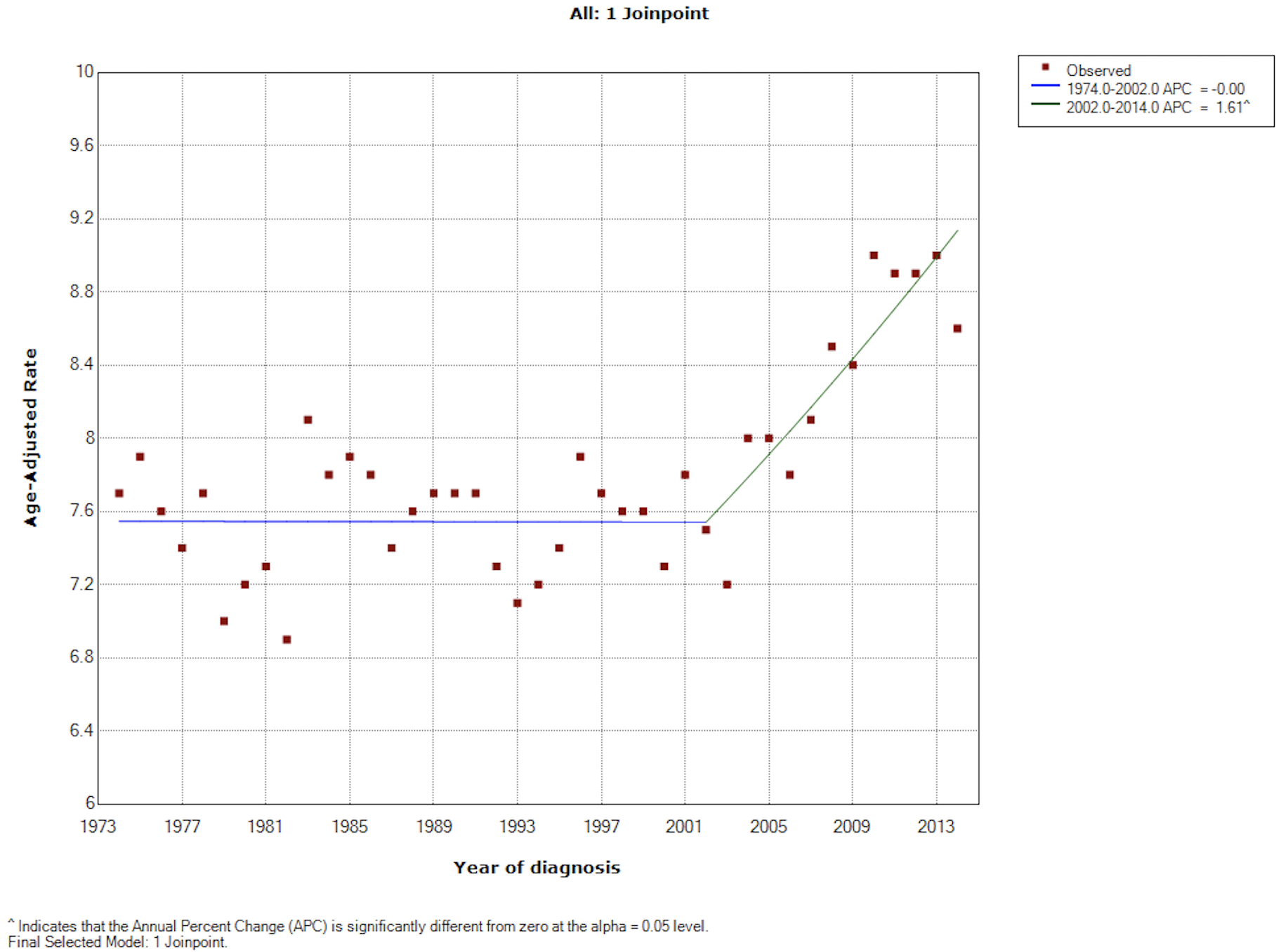Increasing Incidence of Stage IV Breast Cancer Since 2002
*Danielle R. Heller1,2, *Brigid K. Killelea1,3, *Christos Hatzis1,3, *Lajos Pusztai1,3, Donald R. Lannin1,3
1Yale University School of Medicine, New Haven, CT; 2Yale-New Haven Hospital Department of Surgery, New Haven, CT; 3Yale Cancer Center, New Haven, CT
Objective: Despite emphasis on screening and early detection, a subpopulation of breast cancer (BC) patients presents with Stage IV disease at diagnosis. This study's purpose was to determine how population-based incidence of Stage IV has been changing over a 40-year period.
Design: Retrospective analysis of nationwide Stage IV cases from 1974-2014. Analyses used SEER*Stat and Joinpoint Regression.
Setting: SEER registries 9 and 18 (November 2016 submission).
Patients: Females≥18 years old with de novo Stage IV BC.
Interventions: N/A.
Outcome Measures: Stage IV annual percent change (APC), stratified by age and race.
Results: Based on SEER-9, overall incidence of Stage IV per 100,000 women was stable at approximately 7.5 cases from 1974-2002 and increased to about 9.0 cases between 2002-2014, representing an APC of 1.61 (95%CI 1.1-2.1). Stable incidence during 1974-2002 masked a small increase for women<50 years (APC 0.77, CI 0.3-1.2) and decrease for women>50 years (APC -0.20, CI -0.4-0.0). After 2002, however, incidence in both age groups increased significantly (APC 2.71, CI 1.5-3.9 for <50 and 1.35, CI 0.8-1.9 for >50). In the larger SEER-18 registry, rate per 100,000 increased from 7.4 in 2002 to 9.9 in 2014, representing an APC of 2.43 (CI 2.0-2.9). This was similar for white and black women (2.48, CI 2.0-3.0 and 2.28, CI 1.7-2.8, respectively) and slightly higher for Asian women (3.36, CI 2.5-4.2).
Conclusions: After remaining stable for nearly 30 years, there has been an abrupt and striking increase in Stage IV BC incidence after 2002. This increase is unexpected and warrants explanation. 




